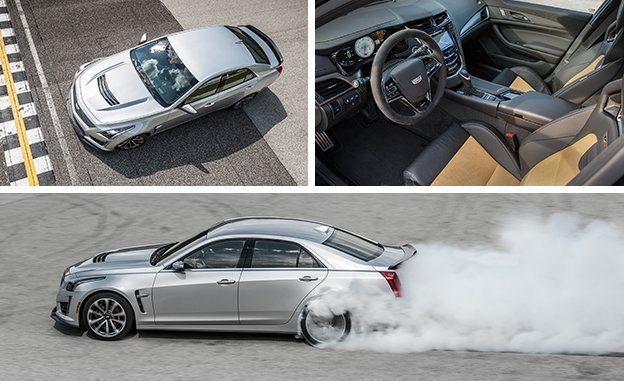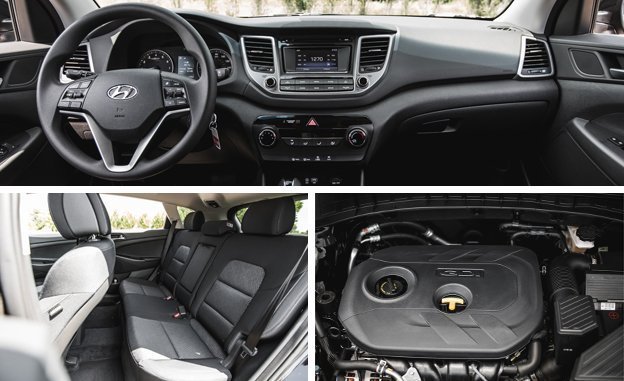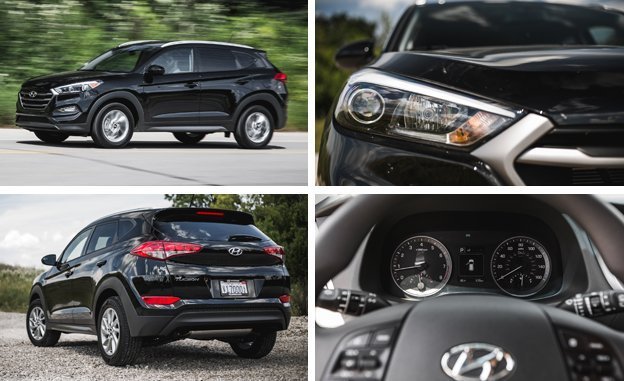 First Drive Review
First Drive Review
Hyundai is just so geeked to tell you about all the gilded features you can get on the 2016 Tucson. It’s practically like an Audi, they might say, what with its LED taillights, LED running lights, LED map lights, and even non-LED-lit things such as heated and ventilated seats, a 405-watt sound system, a panoramic sunroof, leather upholstery, automatic emergency braking, and a turbocharged four-cylinder engine with a dual-clutch automatic transmission. But there’s more to the Tucson story: There’s the base 2016 Tucson SE, a model we didn’t get to drive in our first experience with Hyundai’s updated crossover.
Positioned below the Eco, Sport, and Limited trim levels in the Tucson hierarchy, the SE has the lowest base price, none of the features listed above, and a unique powertrain. Still, it comes with all the style and chassis refinement of the spiffier Tucsons and has all the stuff you probably need. Even without LED anything—okay, there is some LED accent lighting in the headlamps and we’re pretty sure the five-inch touch-screen audio head unit is backlit by LEDs—the $23,595 SE comes with 17-inch aluminum wheels, a rear-seat center armrest, 60/40 split-folding rear seats, automatic headlights, steering-wheel audio and phone controls, Bluetooth, and a backup camera. In the vacuum left by nicer Tucsons’ creature-comfort features and turbocharged engine, you’ll find the essential goodness of a basic, functional interior and a perfectly acceptable naturally aspirated engine.

The SE’s 164-hp 2.0-liter four-cylinder engine and six-speed conventional automatic may seem to represent a big step down from every other Tucson’s more modern 175-hp turbocharged 1.6-liter and seven-speed dual-clutch transmission, but we found that not to be the case in our real-world impressions. Down 11 horsepower and 44 lb-ft of torque compared with the turbo, the 2.0-liter also gives up 1 mpg to the non-Eco 1.6L four’s EPA combined fuel-economy figure with front-wheel drive and 3 mpg on all-wheel-drive versions. In normal driving, however, the 2.0-liter acquits itself well enough, the gearbox dutifully shuffling power to the front wheels without fuss. (All-wheel drive is available for an extra $1400.) Although definitely not as quick as the turbo, the base engine’s lack of pizazz would probably go unnoticed by the average crossover buyer so long as they don’t push past 5000 rpm, where the engine’s soundtrack goes rather grainy and not much thrust happens. At less frenetic engine speeds, enhanced sound deadening and the Tucson’s stiffer structure keep the four-cylinder’s racket at bay.
The relative silence is one of the SE’s most pleasant surprises. At most any speed, very little wind noise penetrates the cabin, and even packed-gravel road surfaces failed to elicit more than a distant hum from the 17-inch tires. The quietude pleases more than the ear; it so beguiles that the SE’s crushingly basic interior moves up several pegs in the driver’s mind. Every surface inside of our front-drive SE test car save for the door handles was constructed from black plastic of different textures and graining. Yet with those pieces’ tight panel gaps, generally attractive layout and design, and the total absence of squeaks and creaks, you might never guess you were in a base model.
We’re big fans of functional simplicity, and the Tucson’s controls are a model thereof. The radio has two big knobs, one for volume and another for tuning, plus an array of thumb-sized shortcuts to key menus or features; this leaves only function-specific buttons on the touch screen such as the radio presets and phone contacts. As far as base infotainment setups go, this one is quite good. There’s stowage space everywhere, too, more than enough for your everyday detritus. The Tucson also comes with a clever reconfigurable load floor that allows owners to set the floor either flush with the rear bumper or two inches lower for a slightly deeper well.

Straightforward also nicely sums up the SE’s over-the-road comportment. Previous-generation Tucsons had two rear-suspension designs, one for front-drive models and another for those with all-wheel drive. This time around, every Tucson features the same multilink rear-suspension design, as well as the same dampers, strut front suspension, and front and rear anti-roll bars, ensuring a uniform experience across the line. Sportiness isn’t implied, but the entry-level Tucson nonetheless proved itself capable of passing a basic back-road sobriety test, faithfully hugging the curves without tripping all over itself. Mainly what holds back the fun is the feedback-free electrically assisted steering, which apparently signed some sort of nondisclosure agreement as to what’s happening on the road. Otherwise, the suspension delivers a comfy ride without sacrificing too much roll stiffness, and the damping is just about spot-on—even on Michigan’s broken roads, we never once bottomed out over a pothole. It wasn’t for lack of trying, either.
In a world where the base-level Honda CR-V wears its poverty on its sleeves with pressed-steel wheels, lots of black-plastic trim, and little delete panels replacing the features the bargain customer skipped, the humblest Tucson looks and feels different. That might be enough to help Hyundai on its way to reaching its goal of selling 90,000 Tucsons in America next year, because while it’s great to know a small crossover can be loaded to the gunwales (and to nearly $35,000) with luxury goods, it’s even better knowing that the very same vehicle can be satisfying in its most basic form.